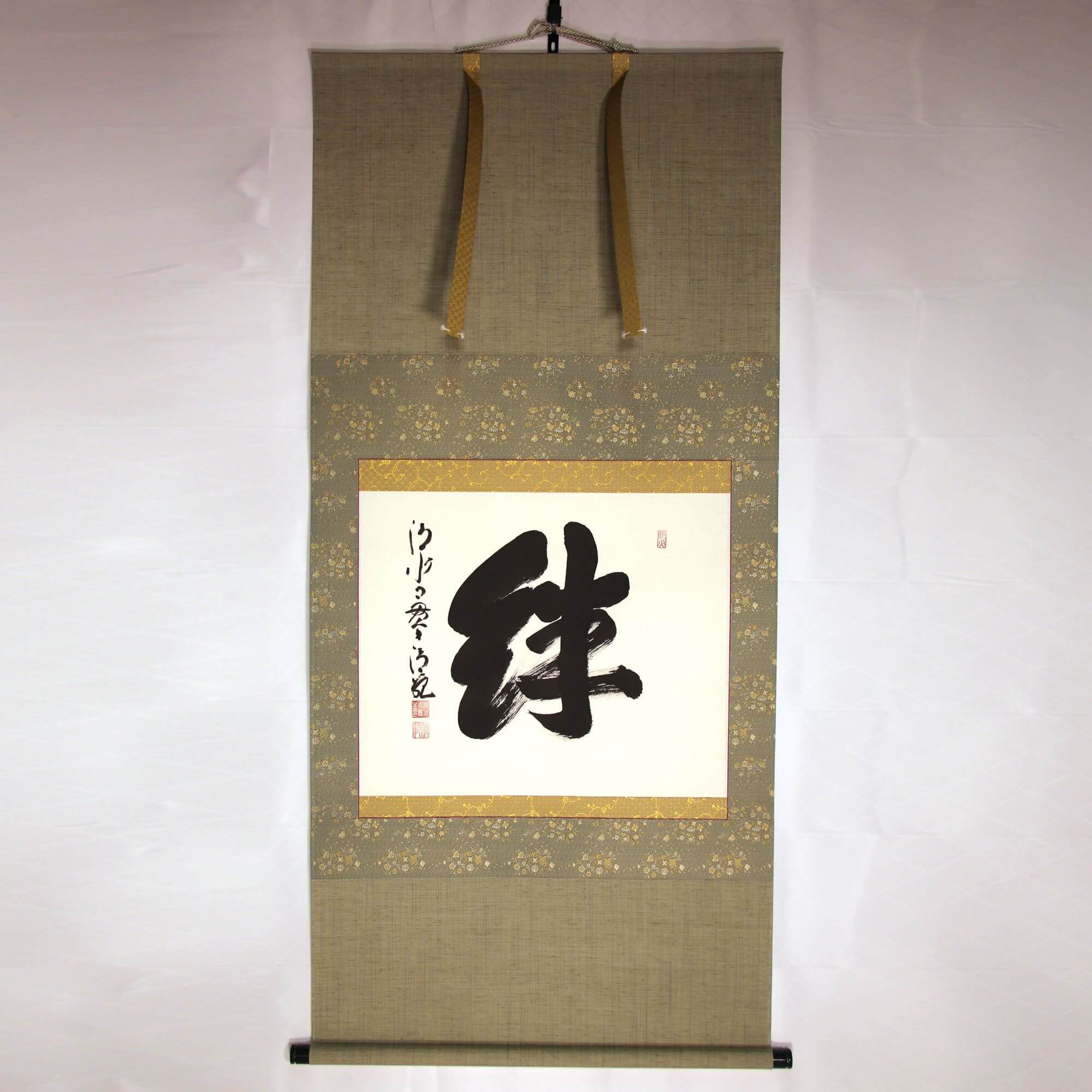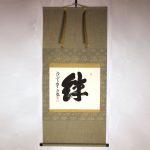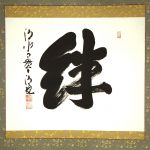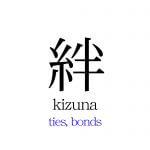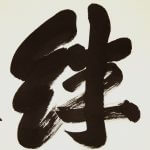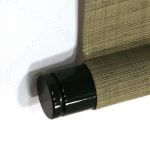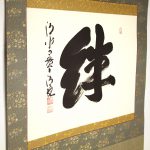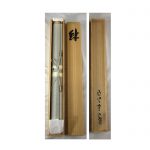Products Lineup
News / Blog
Other Menus
Kakejiku Hanging Scroll: Calligraphy: Kizuna / Mori Seihan - Ties, Bonds
- Product ID
- 0194
- Name
- Mori Seihan
- Profile
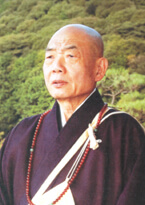
Mori Seihan
1940-
The chief abbot of the Kiyomizu-dera Temple- Size
- 720mm x 1450mm
- Roller End Material
- Wood coated with green "urushi" (lacquer)
- Material of the Work
- Japanese paper
- Price
- JPY 300,000
- Stock Condition
- In stock
- Payment: Click the Paypal Mark
- Duty and Taxes
Import duty and taxes are beyond our control and may apply to your shipment. Please noted that these fees are the responsibility of the buyer.
- Description
Since 1995, the “Kanji of the Year,” has been announced every December 12th at the Kiyomizu-dera Temple. One Chinese character, representing the social conditions of that year, is chosen by the Japan Kanji Aptitude Testing Foundation and celebrated as “the day for Kanji.” At the time of the announcement, the Chinese character is brushed on a large sheet of Japanese writing paper by the chief priest of the Kiyomizu-dera Temple upon the “Oku no in” (inner sanctuary) stage.
Mori Seihan, the chief abbot of the Kiyomizu-dera Temple, is known for writing the “Kanji of the Year” every year. Therefore, he is known as a “nōshoka” (master of calligraphy), probably the best-known calligrapher in Japan. Thus, his pieces of calligraphy are very popular.
The character of “kizuna” (ties) was chosen as the Kanji of the Year 2011. We realized once again the ties with people who are close to us like our family and friends through experience of the Great East Japan Earthquake, so this character was chosen. This character is especially loved among a series of the Kanji of the Year characters, and a calligraphic work of the kizuna character is one of the most famous and popular one out of Seihan’s works. His writing is so neat and there is beautiful consistency, yet powerful.

